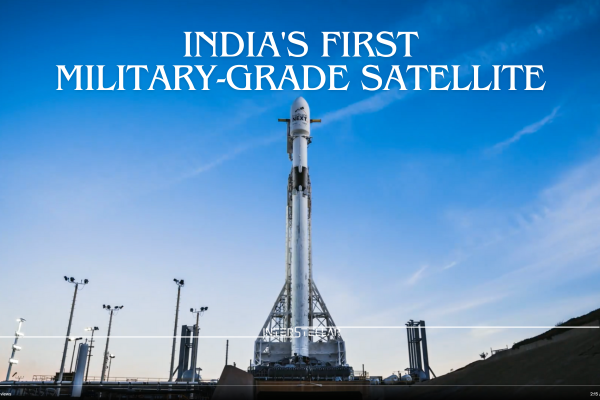India’s private space sector has successfully launched its first military-grade geospatial satellite, which is expected to achieve full functionality in the coming months. The TSAT-1A was built by Tata Advanced Systems Ltd (TASL) at its Vemagal facility in Karnataka. It was onboard the Bandwagon-1 mission launched by SpaceX’s Falcon 9 rocket from the Kennedy Space Center in Florida, USA. This news was confirmed by TASL in a statement on 8th April made jointly with Satellogic Inc., specialising in Earth-observation satellites, which has extensive experience in sub-metre resolution Earth Observation data collection.
We have liftoff! 🚀 TSAT-1A is safely aboard the @SpaceX Falcon 9 rocket en route to a mid-inclination orbit. Ad Astra! https://t.co/YUSlqqOJqO
— Satellogic (@Satellogic) April 7, 2024
TASL officials said the sub-metre resolution imaging satellite has signalled that it is in the right orbit, and tests will be run on it for the next few weeks before it is fully functional. The TSAT-1A is set to revolutionise satellite imaging with its advanced capabilities. It will deliver high-resolution optical satellite images, boasting increased collection capacity, dynamic range, and low-latency delivery through its multispectral and hyperspectral capabilities. This cutting-edge technology promises to open up new possibilities in the field of geospatial imaging.
This is a first step for TASL in space sector!
Built in India TSAT-1A First Sub-metre Resolution Optical Satellite Reaches Orbit.
We announce the successful launch and deployment of TASL’s TSAT-1A satellite aboard the Bandwagon-1 mission by SpaceX’s Falcon 9 rocket 🚀. pic.twitter.com/T8Zg1Thpo3
— Tata Advanced Systems (Tata Aerospace & Defence) (@tataadvanced) April 8, 2024
“The collaboration signed by TASL and Satellogic in November 2023 highlights Satellogic’s expertise to develop and integrate an advanced Earth Observation satellite in India and TASL’s capability to undertake complex system integration,” TASL said via a tweet.
Tata Advanced Systems Limited (TASL) is constructing a ground centre in India to process and download high-resolution military-grade imagery obtained from a satellite. The satellite is capable of capturing images with a resolution of less than one metre per pixel. Although India has a few military spy satellites built by ISRO, this is the first such initiative in the private sector. According to Sukaran Singh, the CEO and MD of TASL, this is just the first step towards achieving their goals.
Tata Advanced, a subsidiary of Tata Sons, has a strong presence in India’s aerospace and defence sector and works in partnership with the Indian Space Research Organisation (ISRO). According to company sources, the company aims to build a constellation of such satellites in the coming years, with a production capacity of up to 25 low-earth orbit (LEO) satellites per year at its manufacturing facility.



